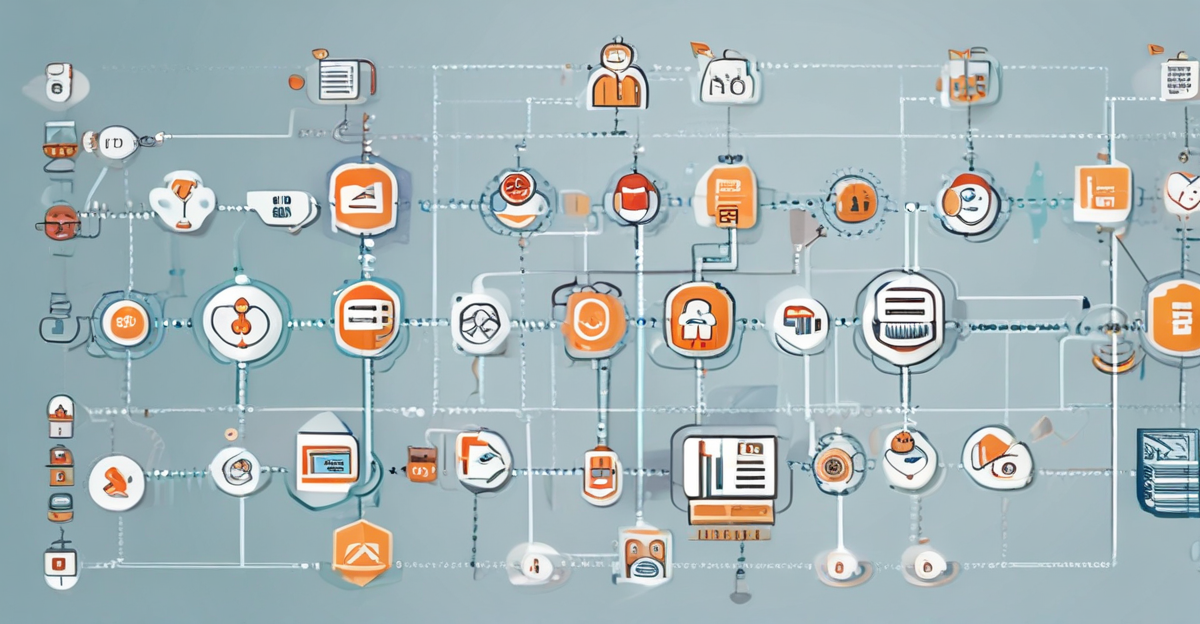Unlock how enterprises operationalize GenAI for scalable impact with domain specificity, governance, and cultural adoption in high-complexity industries.
Auto-published by Growwh – a smarter way to scale content and marketing. Want to know more? Chat with us.
How Enterprises Are Operationalizing GenAI for Real Business Value
The wave of Generative AI (GenAI) sweeping across enterprises holds immense promise, yet scaling from experimentation to sustainable value remains challenging—especially in regulated, complex industries. Leading Indian enterprises from automotive, manufacturing, digital infrastructure, and consumer technology sectors recently shared candid insights on what it truly takes to embed GenAI into mission-critical workflows. Their frontline experiences reveal key lessons about domain specificity, governance, legacy integrations, and culture that define successful GenAI adoption.
1. From Generic Models to Purpose-Built GenAI
Senior technology leaders emphasize that off-the-shelf large language models (LLMs) alone aren’t enough for enterprise needs. In sectors like automotive, retail, and manufacturing, GenAI must operate with deep domain understanding. This means training on context-rich proprietary data connected to internal systems and business logic rather than generic internet text.
Ready to take your brand to the next level?
At Growwh, we help startups and emerging brands grow faster with powerful content, creator collaborations, and tech solutions.
Explore what we do →
Key takeaway: Enterprise-scale GenAI requires domain specificity—not as an optional feature, but as an essential foundation.
2. Embedding GenAI Seamlessly into Existing Workflows
Proof-of-concept projects that stand apart from daily operations risk irrelevance. Successful GenAI applications function as “virtual co-pilots”—embedded within systems for design review, supply chain insights, shop floor automation, or after-sales support. The goal is to augment decision-making invisibly rather than just generating outputs or chatbot interactions.
Key takeaway: GenAI earns its enterprise seat when integrated into workflows, amplifying operational efficiency and real-time support.
3. Working Within Legacy Systems: Compatibility Over Disruption
Most enterprises operate with complex, decades-old infrastructure like ERPs and siloed data formats. The solution is not rebuilding but adapting GenAI to read and reason over legacy documents, structured logs, and other formats within restricted digital environments.
Key takeaway: GenAI success hinges on its ability to complement and operate within existing legacy systems rather than replacing them.
4. Governance, Audibility, and Building Trust
Concerns around hallucinations are real, but enterprises prioritize traceability, explainability, and governance above all for risk mitigation. Knowing what data influenced AI outputs, maintaining version control, and auditing model performance over time are critical for compliance.
Key takeaway: Robust governance is a non-negotiable pillar for scaling GenAI in high-stakes settings.
5. Measuring Real Business Impact
Moving beyond vanity metrics like bug counts or response times, companies now benchmark GenAI by concrete outcomes like reduced downtime, increased production throughput, and accelerated decision-making.
Key takeaway: GenAI projects must tie directly to measurable business value and bottom-line improvements.
6. Cultural Alignment Is as Crucial as Technical Infrastructure
Even tech-savvy organizations face internal resistance, especially among engineers and operations teams. Overcoming skepticism requires sustained training, transparent communication, and building trust in AI’s role as an augmenting partner.
Key takeaway: Infrastructure alone won’t guarantee success; human adoption and culture shift are critical.
7. Security and Intellectual Property Drive Architecture
For industries involving engineering, design, and manufacturing, protecting sensitive IP shapes GenAI deployments. Secure-by-design infrastructures ensure data residency, air-gapped operations, and controlled access are embedded from day one.
Key takeaway: Privacy and security considerations inform GenAI system design, not just add-ons.
8. Start Narrow, Prove Value, Then Scale
Attempting broad rollout without focus often leads to failure. Leaders recommend identifying one high-impact application—such as predictive maintenance or document intelligence—validating outcomes, then expanding gradually on a proven roadmap.
Key takeaway: Intentional, iterative expansion drives sustainable GenAI adoption.
Bridging the Gap Between Business and AI Implementation
Enterprises commonly face a “translation gap” between AI technology and business goals. Production pilots—defined as initiatives with real enterprise data, clear KPIs, and scalability baked in—offer a path forward. Unlike traditional pilots, these are designed to deliver measurable value from Day 1.
Scalability depends less on sheer compute power and more on control, observability, and governance. Solutions supporting air-gapped deployment, precise model versioning, and auditability align well with regulated sectors like manufacturing, telecom, and public services.
Regarding IP protection, roughly 70% of models in such environments are built from scratch rather than fine-tuned on public LLMs. This approach enhances compliance, data isolation, and domain relevance, boosting enterprise confidence.
Finally, change management requires patience and metrics-focused experimentation to overcome early resistance. Collaborative learning models paired with human experts help unlock maximum potential.
Moving from Experimental to Transformational
The next phase of GenAI adoption in enterprises isn’t about intelligence alone—it’s about embedding relevance. Systems must understand unique plants, codebases, and compliance frameworks rather than generic knowledge. Use cases that highlight root-cause analysis, compliance anomaly detection, or accelerated product testing represent meaningful value.
Impact is measured not merely by lines of code but by concrete outcomes: downtime minimized, errors reduced, and decisions made faster.
For enterprises navigating complexity, the pathway to GenAI success combines contextual precision, governance, legacy adaptation, cultural readiness, and outcome-driven scaling. By focusing on these pillars, organizations can move beyond experimentation to harness the full value of GenAI within their core operations.
This article was auto-generated as part of a smart content campaign. Curious how we do it? Chat with us to learn more about our content automation systems.
Discover more from Growwh
Subscribe to get the latest posts sent to your email.


